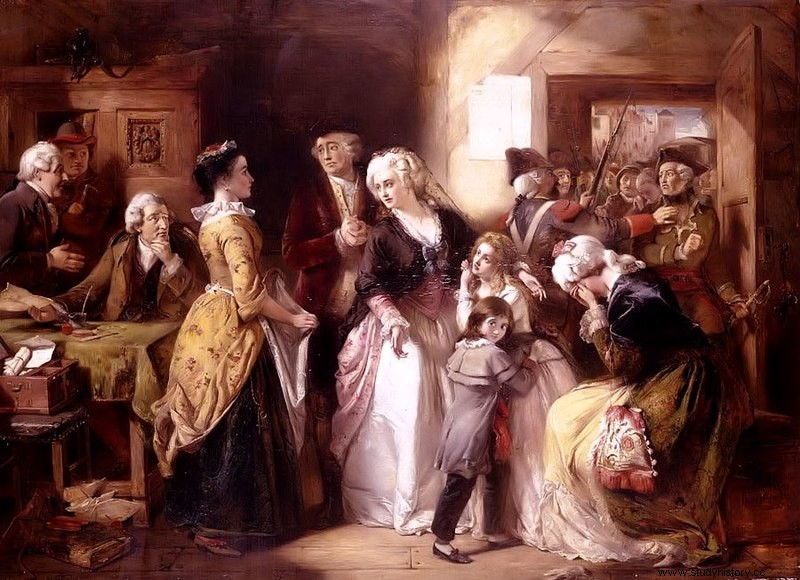- In May 1789, Louis XVI summoned the representatives of the States General:the financial situation of France was catastrophic. On June 17, the Third Estate constituted itself into the National Assembly. On July 14, the people of Paris invaded the Bastille. August 26 is the day of the proclamation of the Declaration of the Rights of Man and of the Citizen. The monarchy is however retained as a political system:it becomes parliamentary.
- In the aftermath of the French Revolution, the king's entourage (the queen and the Spanish ambassador, for example) advised him to leave Paris to take refuge in the provinces, in order to prepare for a return to Europe. Former regime, but the monarch initially rejects the idea.
June 20 and 21, 1791

Characters
Louis XIV
Axel de Fersen
Procedure
After Mirabeau's death on April 2, 1791, the king felt isolated. On April 18, 1791, the royal carriage was blocked by demonstrators:the king and his family went to Saint-Cloud.
Following this episode, the king therefore decides to leave Paris. Axel de Fersen, a Swedish nobleman close to the royal family, draws up the plan for the escape. The king must reach the town of Montmédy, in Lorraine, near the border with Belgium:the troops there are favorable to the monarch. The European powers must then intervene to reinstate royalty in France.
On the night of June 20, the king, queen and their children therefore left the Tuileries. If the exit from Paris takes place without problems, things get complicated later:the troops supposed to escort the carriage to its destination are not at the meeting point. Arrived in Varennes around eleven o'clock in the evening, the king is recognized:the patriots of the city are alerted, as well as the national guard. The next morning, the royal family leaves for Paris. As it approaches the capital, a crowd accompanies the carriage and becomes more and more violent.
Consequences
- The people of Paris are angry at the return of the king. At the National Assembly, we read the Declaration of the King addressed to all French people , which Louis XVI had left when he left, and in which he affirms that if he had to accept the laws of the Assembly, it was by constraint and not by free will. This declaration is displayed in the streets of Paris.
- Public opinion, mainly monarchist, doubted the sincerity of the king after the episode of Varennes:it therefore turned to republican ideas. When the carriage of the royal family arrives, the eyes of the statue of Louis XV are blindfolded, a symbol of the blindness of royalty.
- On July 17, 1791, Republicans filed a petition asking the Constituent Assembly to proclaim the forfeiture of Louis XVI. The petition is placed on the altar of the homeland of the Champ-de-Mars. The national guard represses the gathering, there are several dead. On September 14, 1791, the king took the oath to the new Constitution. He was overthrown a year later.
